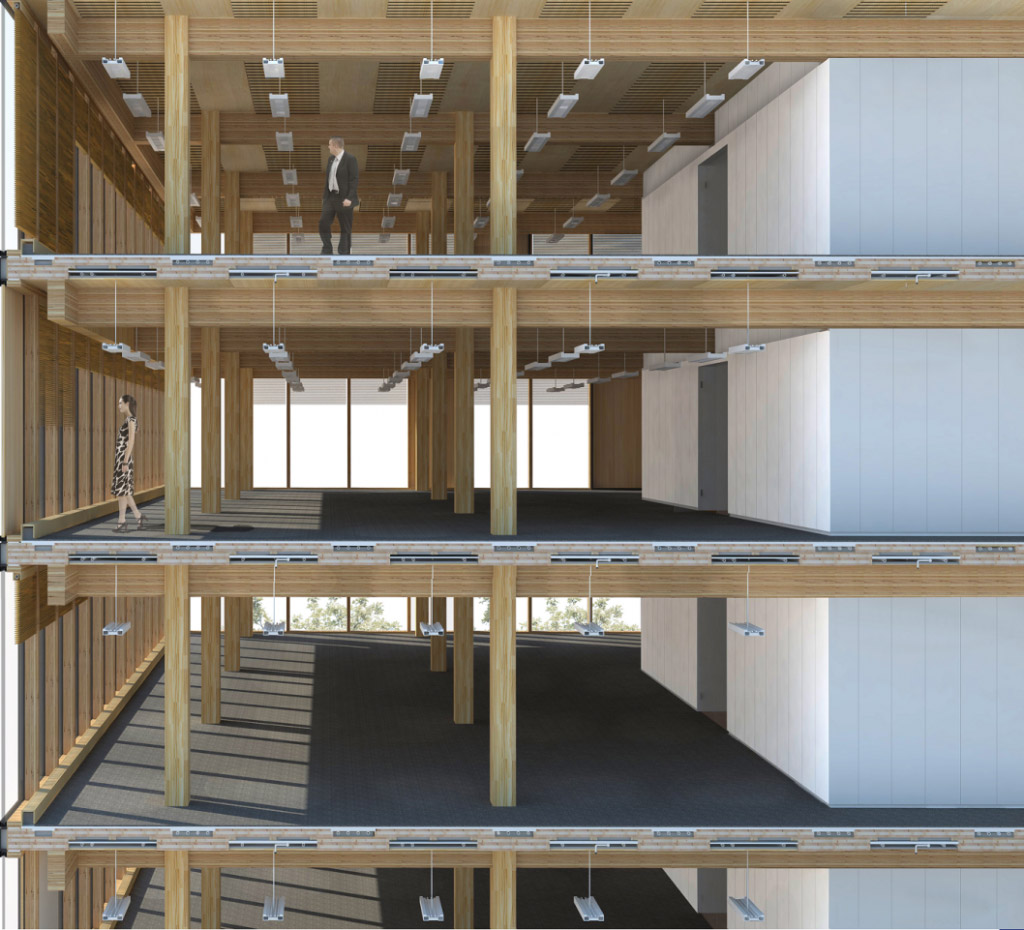Legislation more than two years in the making that will give a huge boost to cross-laminated timber is now on the verge of becoming federal law. With the help of Washington State lawmakers like U.S. Rep. Susan DelBene, U.S. Rep. Derek Kilmer and U.S. Sen. Maria Cantwell, Congress this week passed the Timber Innovation Act as part of the $400 billion Farm Bill.
We have written about the Timber Innovation Act (here and here) since it was first introduced in 2016. And we are thrilled to write about it becoming law. The law now only needs the president’s signature, which is expected. The legislation will increase federal research and grants into the construction of tall wood buildings and help implement a state-by-state education program for the use of CLT in tall buildings.
According to Woodworking Network, the Timber Innovation Act will:
- Establish a performance-driven research and development program for advancing tall wood building construction in the United States;
- Authorize the Tall Wood Building Prize Competition through the U.S. Department of Agriculture (USDA) annually for the next five years;
- Create federal grants to support state, local, university and private sector education, outreach, research, and development, including education and assistance for architects and builders, that will accelerate the use of wood in tall buildings;
- Authorize technical assistance from USDA, in cooperation with state foresters and state extension directors (or equivalent state officials), to implement a program of education and technical assistance for mass timber applications; and
- Incentivize the retrofitting of existing facilities located in areas with high unemployment rates, to spur job creation in rural areas.
“The Timber Innovation Act will create new jobs across rural Washington by fostering innovation. The building technologies promoted in our bill, like cross-laminated timber, will bring several wins to Washington, including faster construction of buildings, more eco-friendly buildings, and new timber jobs.”
Rep. Susan DelBene (whose district covers most of Snohomish, Skagit and Whatcom counties and some of King) and Rep. Derek Kilmer (whose district covers the Olympic Peninsula, most of the Kitsap Peninsula and most of the city of Tacoma):
“Washington’s First District is home to rural communities with economies dependent on forest products,” said DelBene. “Timber towns across our region have been in desperate need of new good-paying jobs, and the use of mass timber in tall wood buildings will help forge a path to newfound economic growth. By adding key provisions of the Timber Innovation Act into the Farm Bill, we are encouraging the use of innovative green building materials that will result in more jobs for hardworking local families, stronger local economies, and a healthier environment for the people of Whatcom, Skagit and Snohomish counties.”
“Building with new wood technologies and wood that is sustainably harvested will lead to more jobs and mills on the Olympic Peninsula and taller, more earthquake-resistant buildings in Seattle,” Kilmer said. “That’s a vision that I call timber 2.0, which is a sustainable plan that will reinvigorate timber communities, lead to healthier, sustainably-managed forests and ultimately create more economic opportunities for more people in more places.”
Washington forestry companies are excited about the law’s potential:
In addition to being cost-effective, (cross-laminated timber) uses less wood than products traditionally used in construction and does not produce the carbon footprint of materials such as metal, said Rob Janicki, owner of Janicki Logging and Construction (in Skagit County).
Jefferson Elementary School in Mount Vernon has the first classroom in the state built with CLT.
Janicki said the main barrier to using CLT has been getting approval from city and county planning departments. He’s been hoping to use the material in some area projects, and said he hopes the (Timber Innovation) Act will make its use more common.
